BART partners with students to launch new courtesy posters
BART has enlisted graphic design students from the California College of the Arts in San Francisco to help combat bad behavior and encourage positive rider etiquette. Starting this month and rotating throughout the year, riders will see the results of this partnership- about a dozen poster designs for on board trains and inside stations taking on topics such as backpack etiquette, elevator cleanliness, littering, fare evasion, behavior on trains, and more.
“We asked the students to come up with something attention grabbing, engaging, honest and playful,” said Alicia Trost, BART Spokesperson, who worked with the students in addition to BART’s Art Program Manager Jennifer Easton and Tim Chan, Acting Group Manager of Stations Planning. “We also wanted to embrace ideas and campaigns that younger generations would relate to and connect with,” Trost said.
Under the direction of class instructor Eric Heiman and student project manager Bill Chien, the students did briefings with BART, spoke with riders, and drew on their own transit experiences to develop a campaign meant to change behavior and improve the rider experience at BART. The students were participants in the TBD* Studio that pairs advanced students with community partners to provide quality design services while exposing graphic design students to professional experience and the rewards of using their skills in the service of a good cause. We asked them to contribute the following blog post about their methods and experience.
Blog post submited by Eric Heiman, Associate Professor of Design, California College of the Arts
When Rachel Berger, the chair of the California College of the Arts’ undergraduate Graphic Design department, and I hatched the plan for what would become TBD* last summer, we wanted to give CCA students real world experience by working on design commissions from local nonprofits. By extension, we also hoped that the students would get the opportunity to see their design out in the world, making a positive impact. When BART approached us about collaborating on an advocacy project that would be implemented in stations and cars across the Bay Area, the potential reach and impact made it an assignment we couldn’t pass up.
“I was incredibly elated to hear TBD* would be working with BART this semester. As an iconic people-moving system BART stands alone on the west coast, outshined only by the New York subways in the greater United States.” —Kirk Johnson, TBD* student
BART’s request was for the TBD* students to address improving overall conduct that would ensure continued safe and enjoyable service on its system. After an initial meeting with our BART liaisons, Jennifer Easton, Alicia Trost, and Tim Chan, we realized that there was a broad range of possibilities in terms of tackling the problem. So TBD* would entertain them as an entire class, collaboratively.
“From the very beginning, we knew working with BART would be a pleasant experience. Their thinking aligned with us. They were longing for fresh, bold, engaging kind of work, and they trusted this young group of designers to bring magic onto the table. Of course, we couldn’t let them down.” —Bill Chien, TBD* student
The students—Bill Chien, Kirk Johnson, Eing Opastpongkarn, Anisha Sachar, Emily Waite, Lucy Wang, and Taylor Wega—broke up into three groups to do field research. They visited stations and rode trains, talking to riders and silently observing behavior. A few insights around conduct and how to improve it emerged: 1) People generally keep to themselves (and are often on their headphones), but they do look at posters and other forms of visual communication on the trains to pass the time; 2) But the institutional feel of BART’s communication is not very engaging; and 3) Despite occasional issues with the service, people generally do both want it to succeed, and courtesy and respect on BART is commonplace (for the most part).
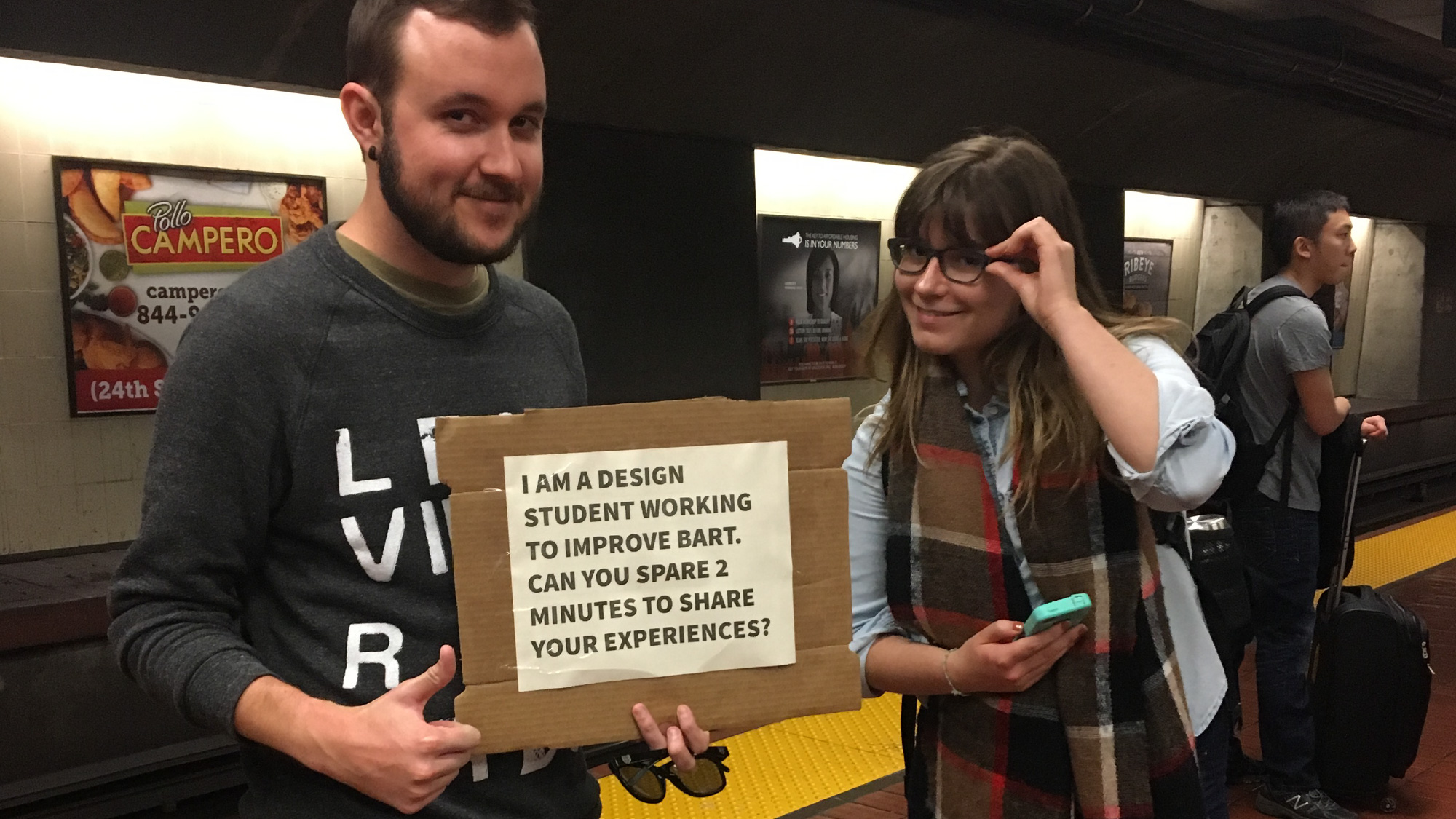
With this in mind we invited BART staff back to participate in a group brainstorm that addressed these insights, asking how might we make people care more about BART? How might we further engender a sense of accountability and code of respect in riders? And accomplish it in a serious yet friendly way that ultimately creates a better connection between BART and its riders?
“It was helpful and insightful to workshop with the women from BART so we could ask them about behavior on BART and find out what has and hasn't worked for them in the past.” —Anisha Sachar, TBD* student
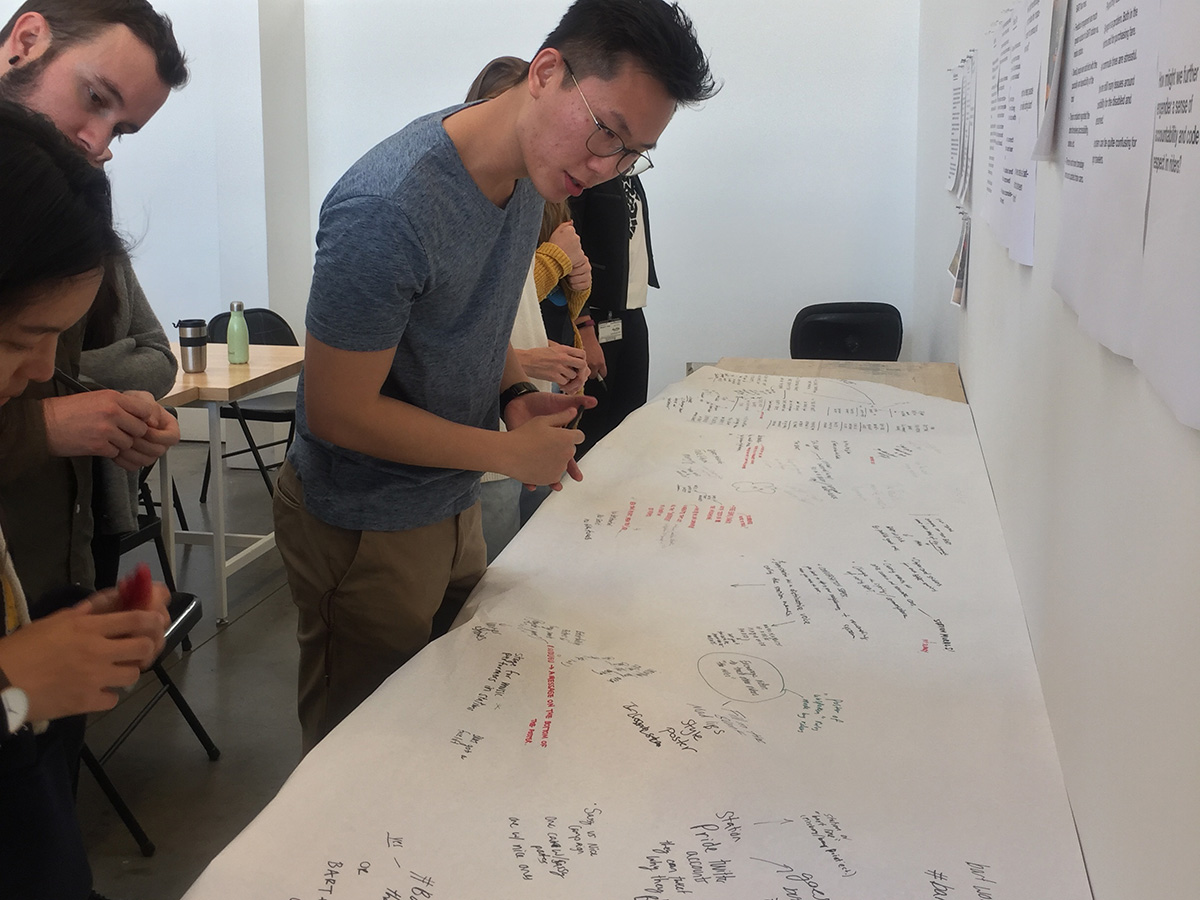
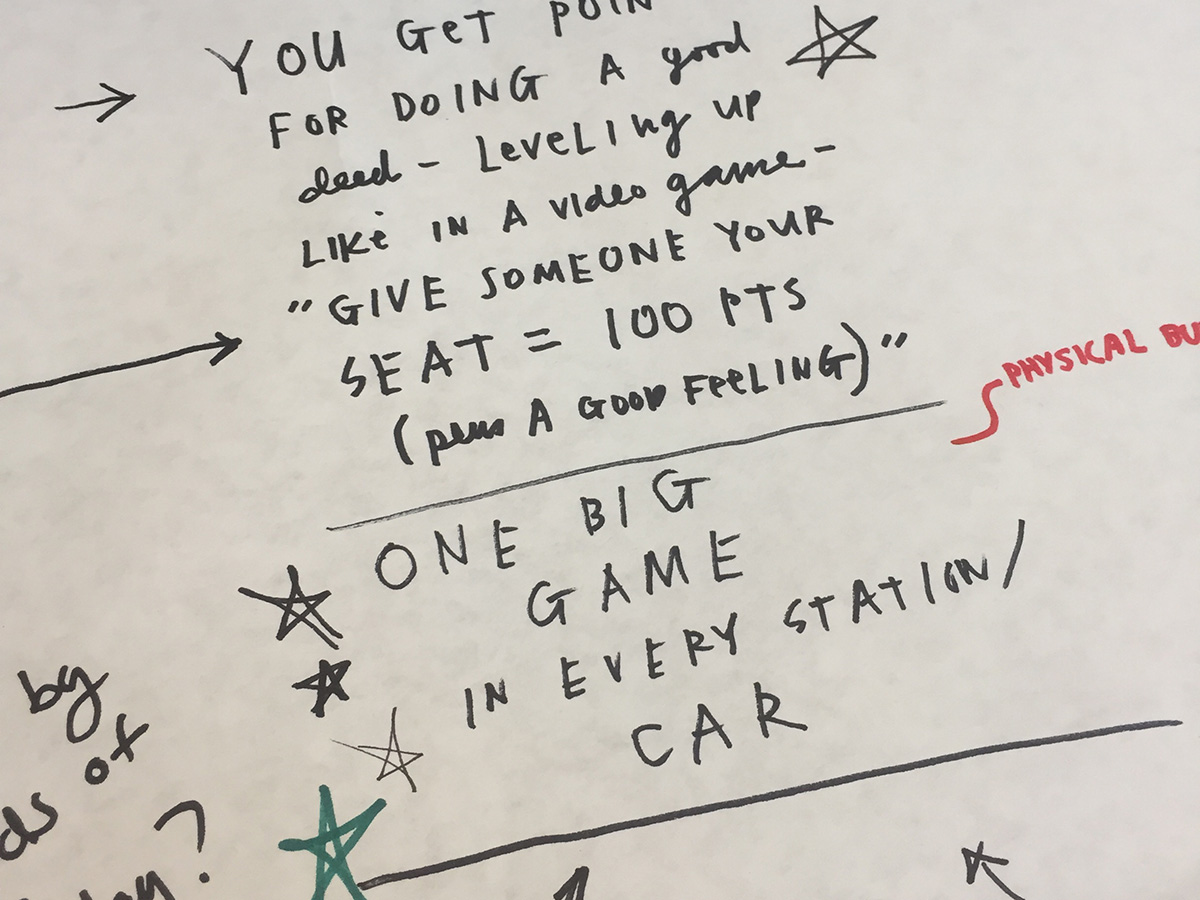
For about 30 minutes everyone wrote down whatever crazy ideas came to mind and a few trends emerged:
-Use the themes and mechanics of gaming to incentivize good behavior on BART.
-Use different mascots that showcase good behavior on BART.
With these larger ideas in play, students started to work up designs—some alone (Bill, Kirk, and Eing) and some in pairs (Taylor/Lucy and Anisha/Emily)—and a few weeks later the students presented their five ideas to the BART team. Ideas, as the students wrote their introduction, that “should be fun, a bit cheeky, and have the ability to create buzz.”
“We tried to tackle the challenge of creating something that spoke to the rules without seeming overly authoritative and dry.”—Anisha Sachar
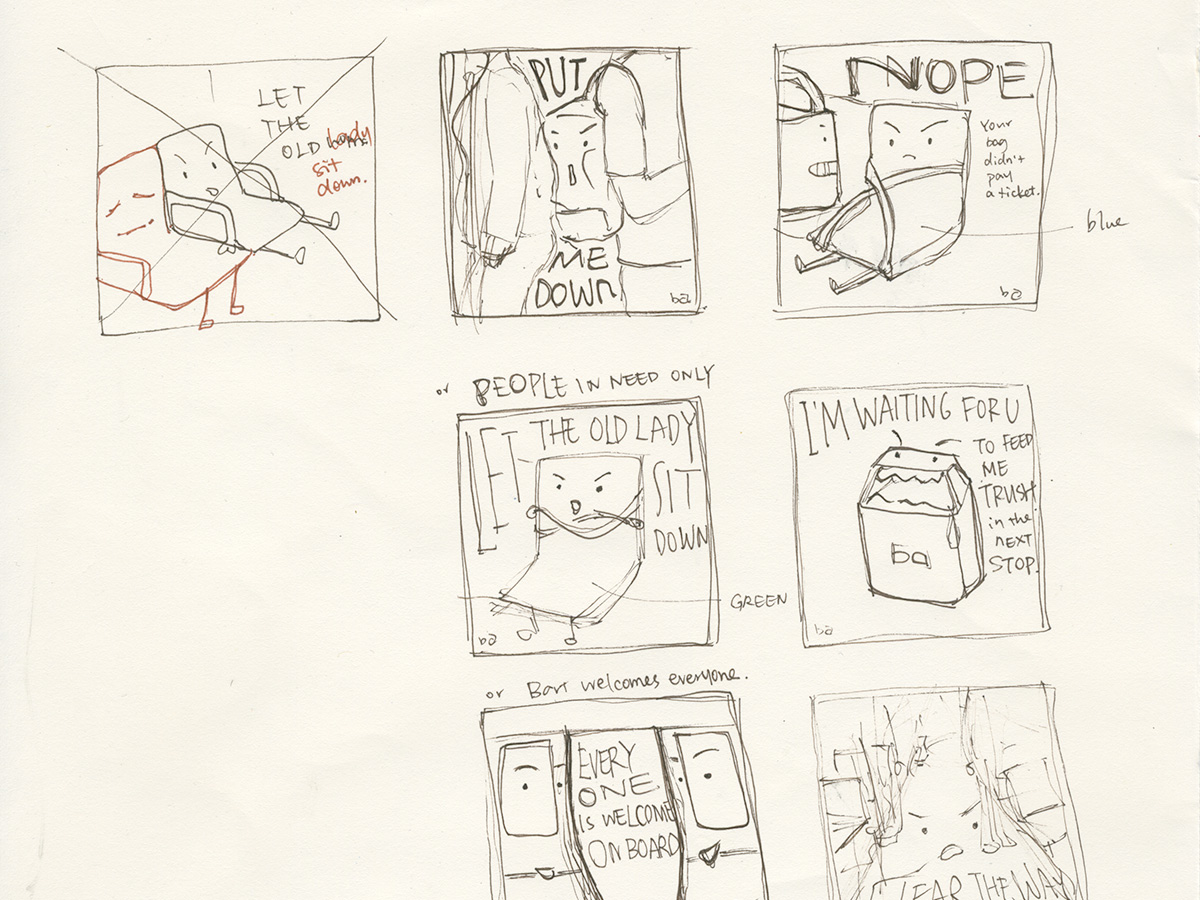
I would guess that every graphic designer remembers the first time they create something that actually gets produced and goes out into the world. (Mine was a tiny rave flyer for a now defunct San Francisco dance club. Not nearly as big a splash.) After the presentation, when Alicia, Jennifer, and Tim let the students know that they’d like to produce all the directions, excitement rippled through the room. We’d already made a few client presentations before this one, but BART solidified TBD* and its potential in that moment—for me and the students. Thousands of commuters would be seeing their work. How cool is that?
“As the leader of the project, I never thought our client would open to all of our ideas. It made our day. We embraced their constructive feedback and kept bettering our works for the audience.” —Bill Chien
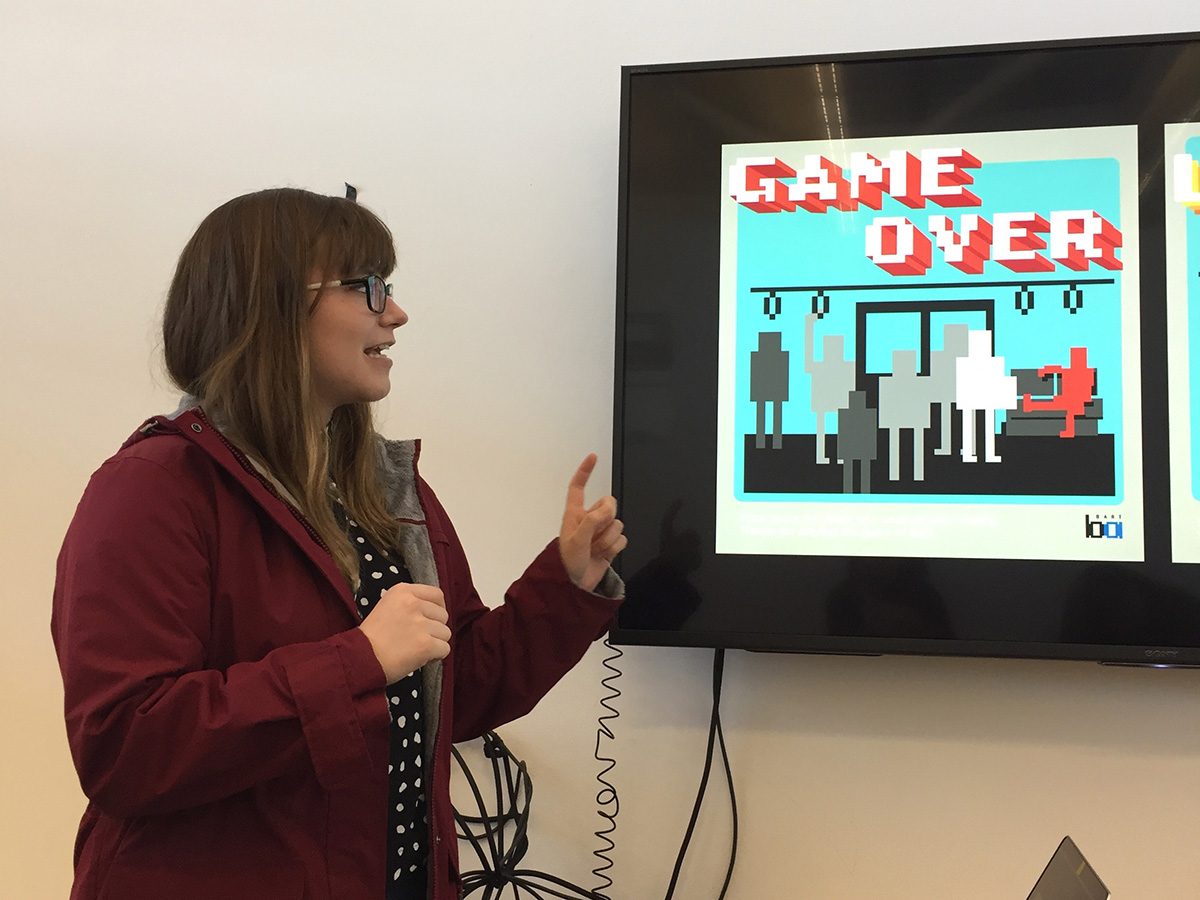
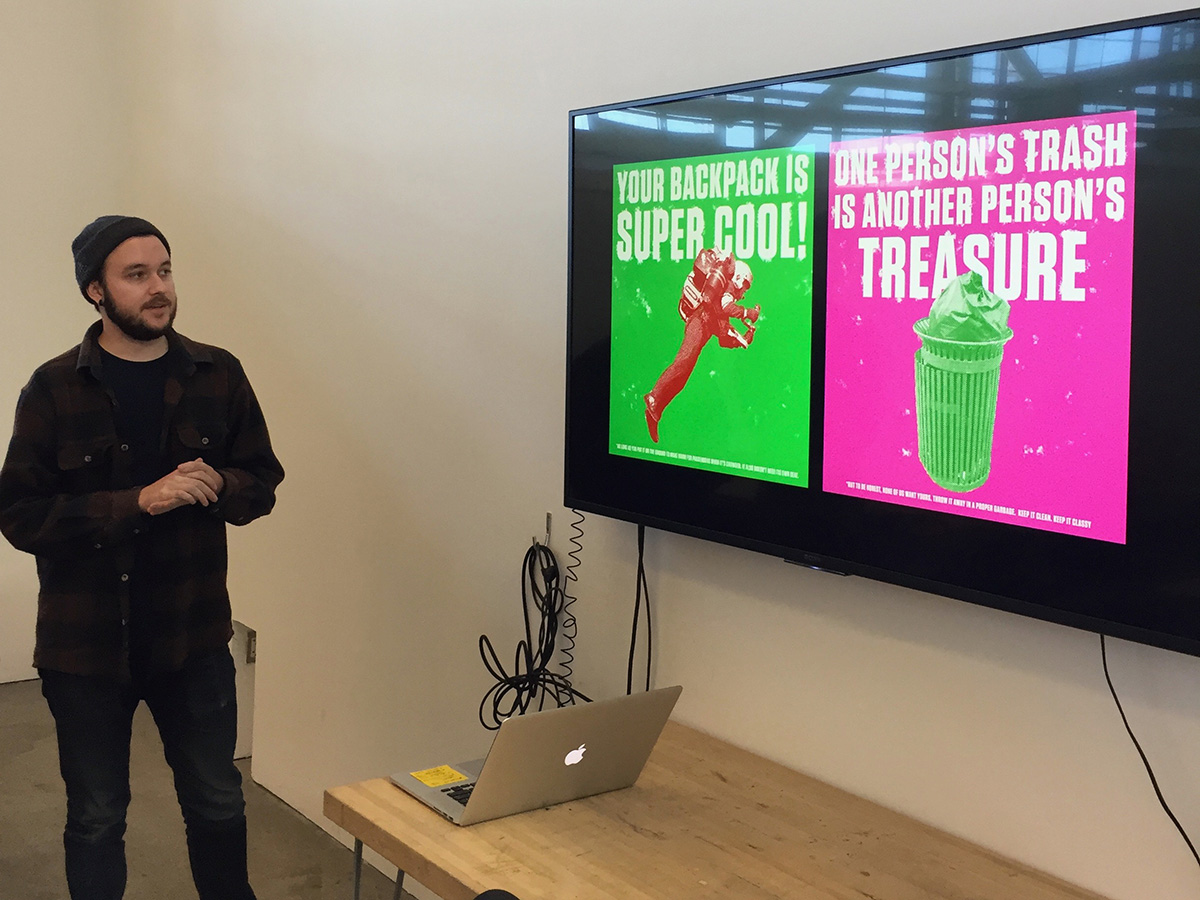
The students quickly learned, though, that there’s always a bit more work to be done to get any design ready for prime time. Most hypothetical school projects barely get past what’s akin to a first round client presentation. There were many tweaks still to be made here: Is that the right copy? Could that color be shifted a bit? Can we get a bit more contrast in that image? Should that type be a little bigger? Can you refine the illustration so we can see the eyes a bit more? We need to reshoot that photo! God is in the details, as they say, and the students got a crash course in what it takes to divine a design to its ideal, finished form.
I tell all my students that if your design gets even just one person to think or act differently, then the job was worth it. Now, on the eve of the students’ designs going out into the world, I’m grateful for the opportunity BART has given the students to potentially change a lot more than one person. We’ll see what happens.
“Overall it was exciting and rewarding to create something that will be seen by so many people (including us) every day.” –Anisha Sachar
“As a Bay Area native it was very fulfilling to work with a service that I have been using all of my life.” —Lucy Wang
“No word can describe how excited we are to see our work put out in the real world and to be seen by hundreds of people.” —Bill Chien
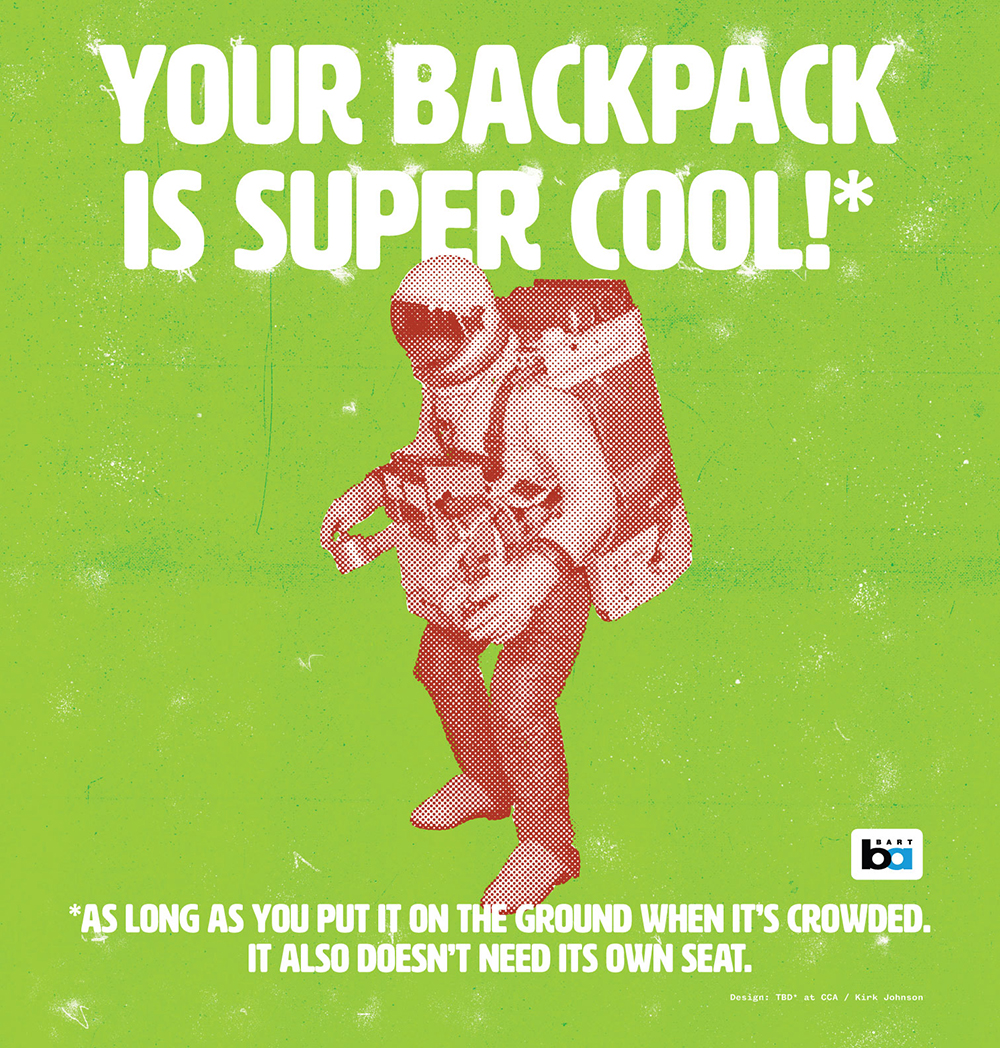
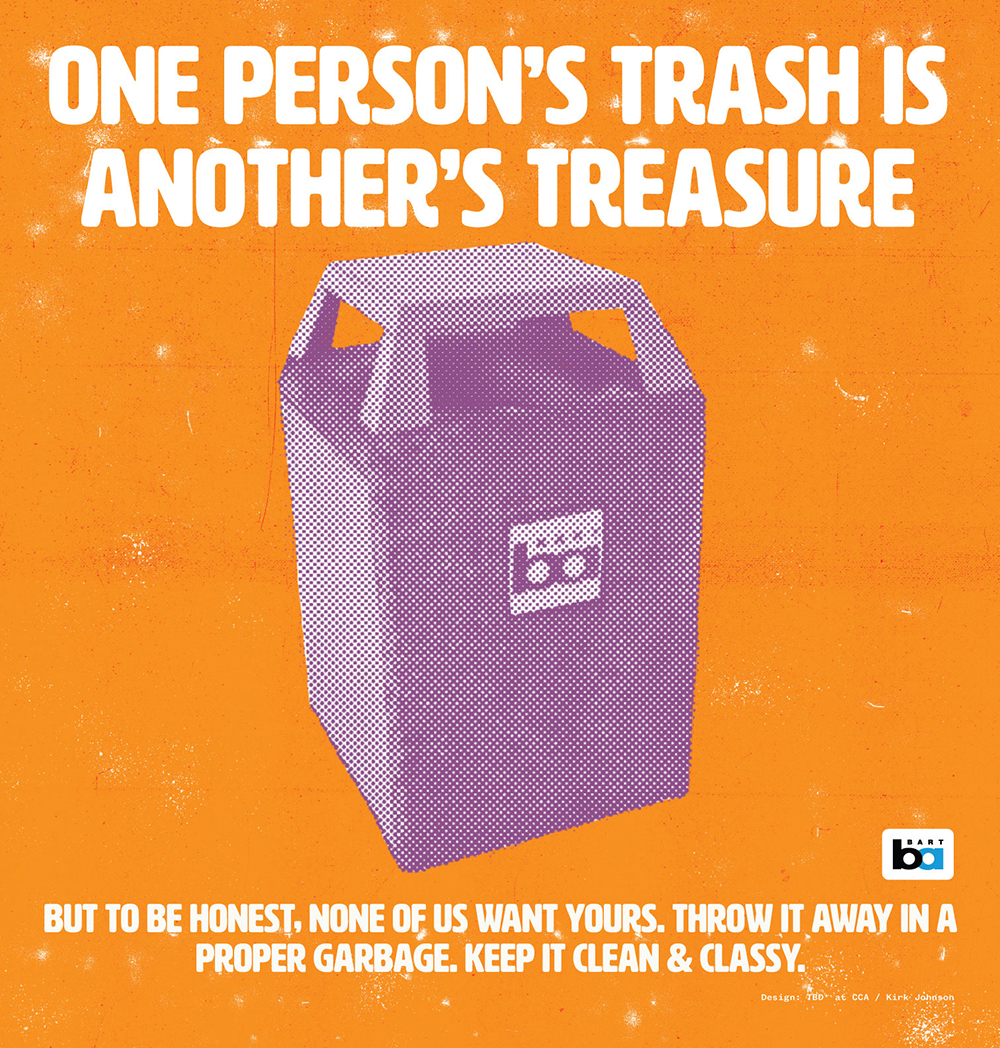
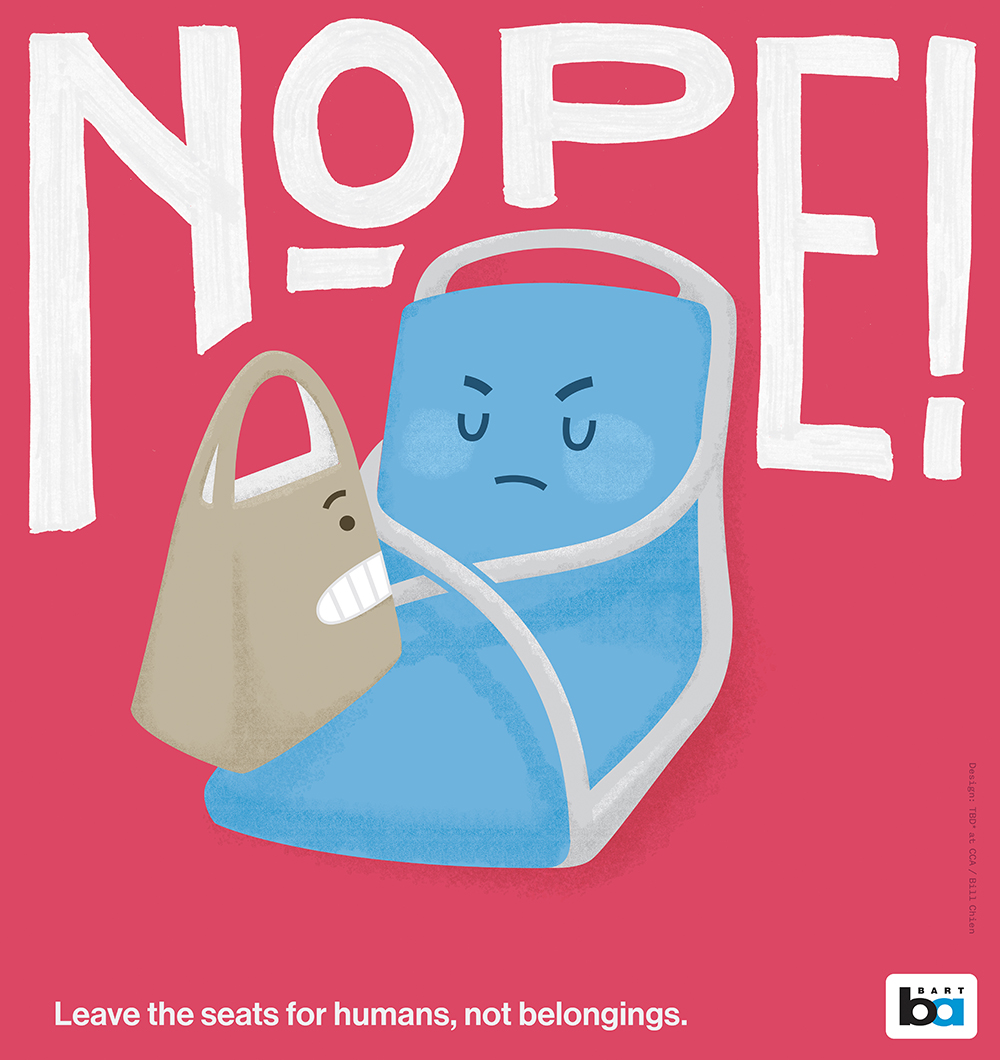
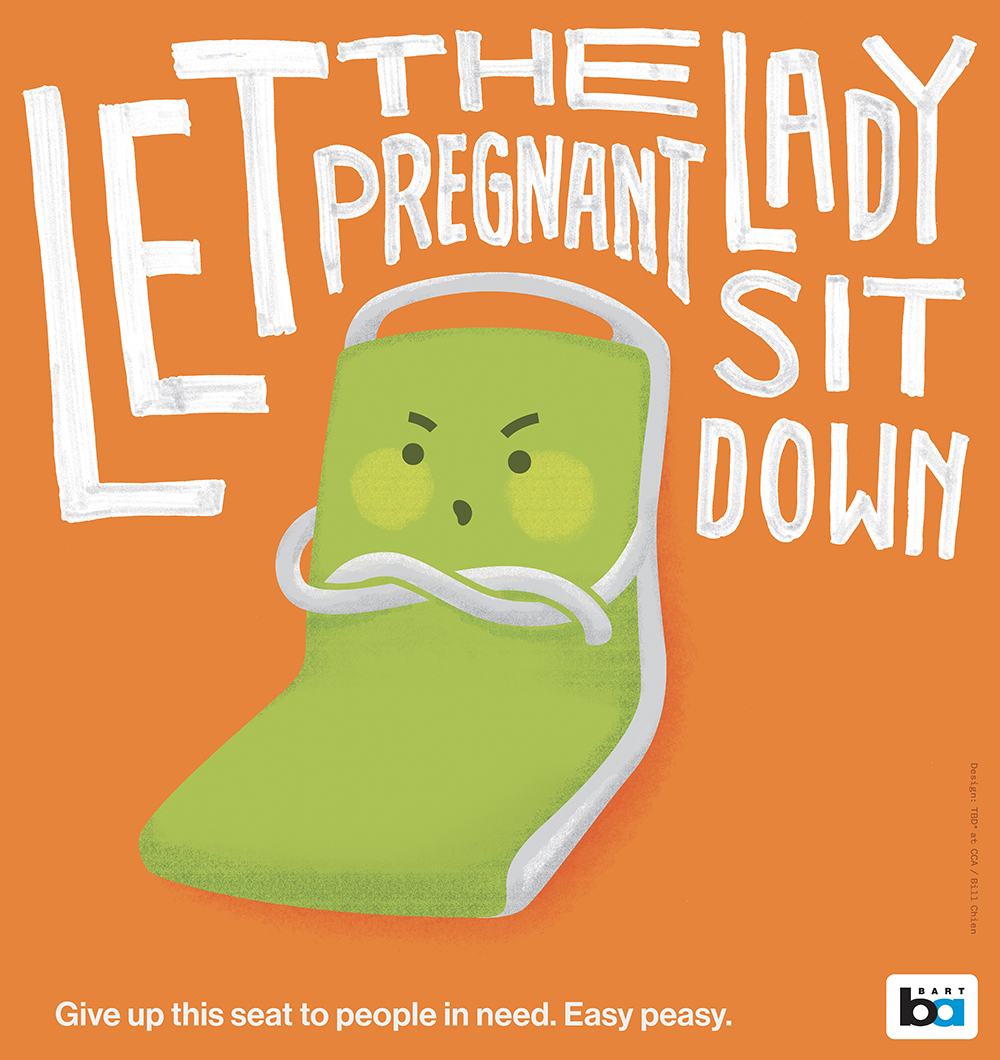
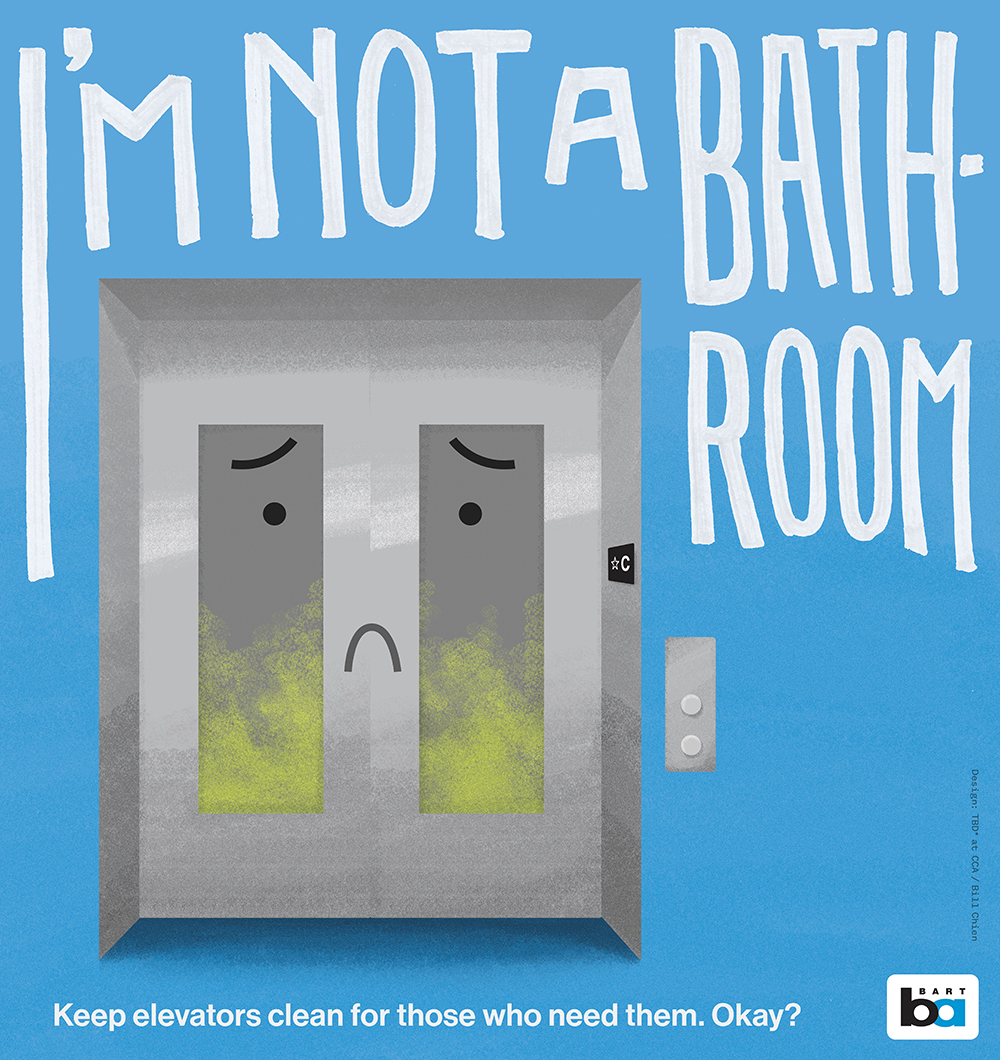
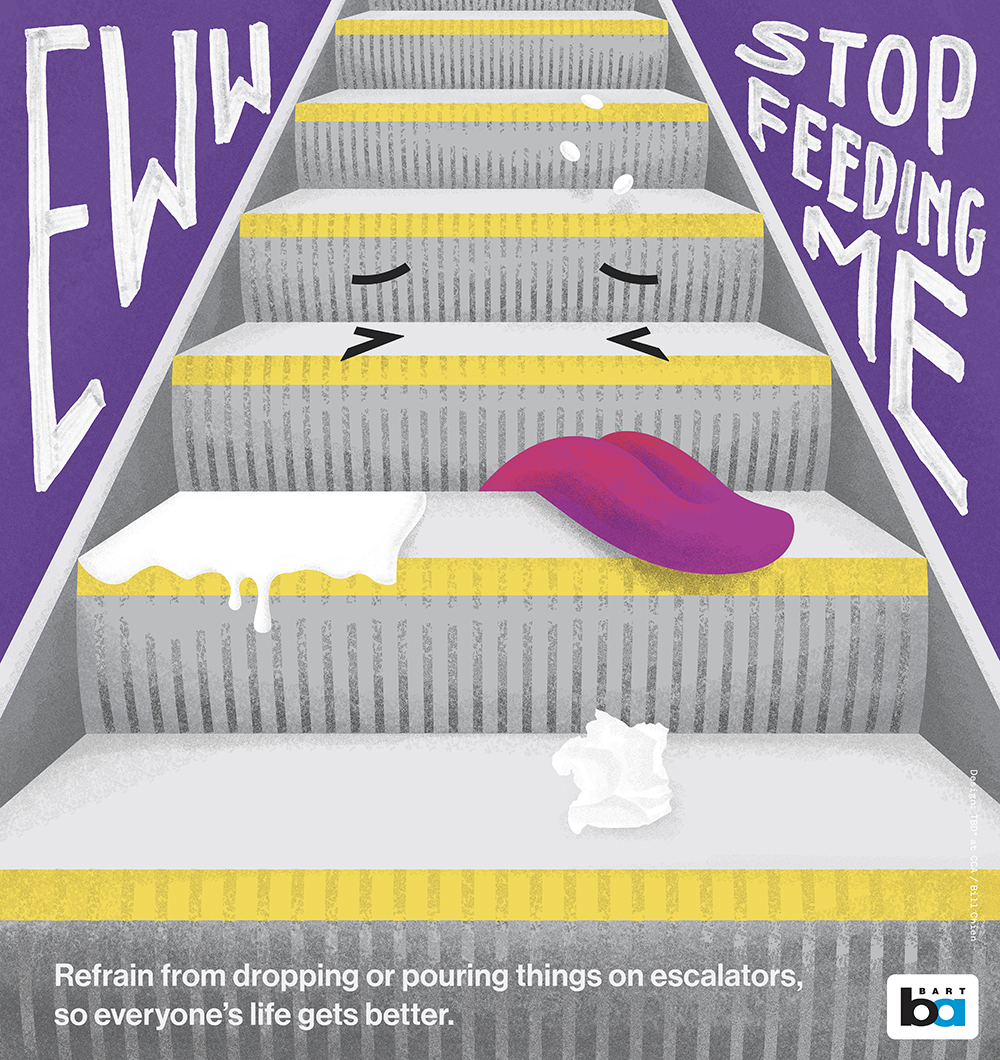
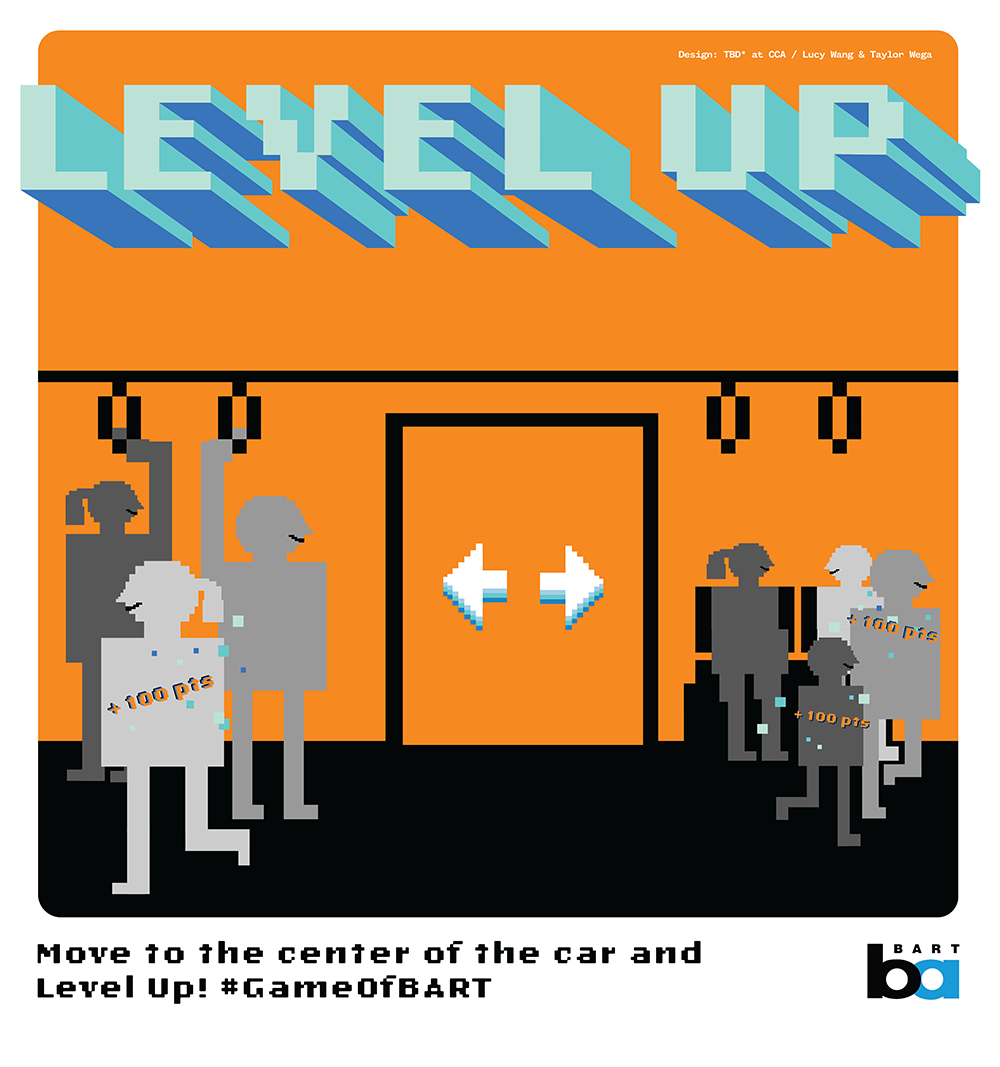
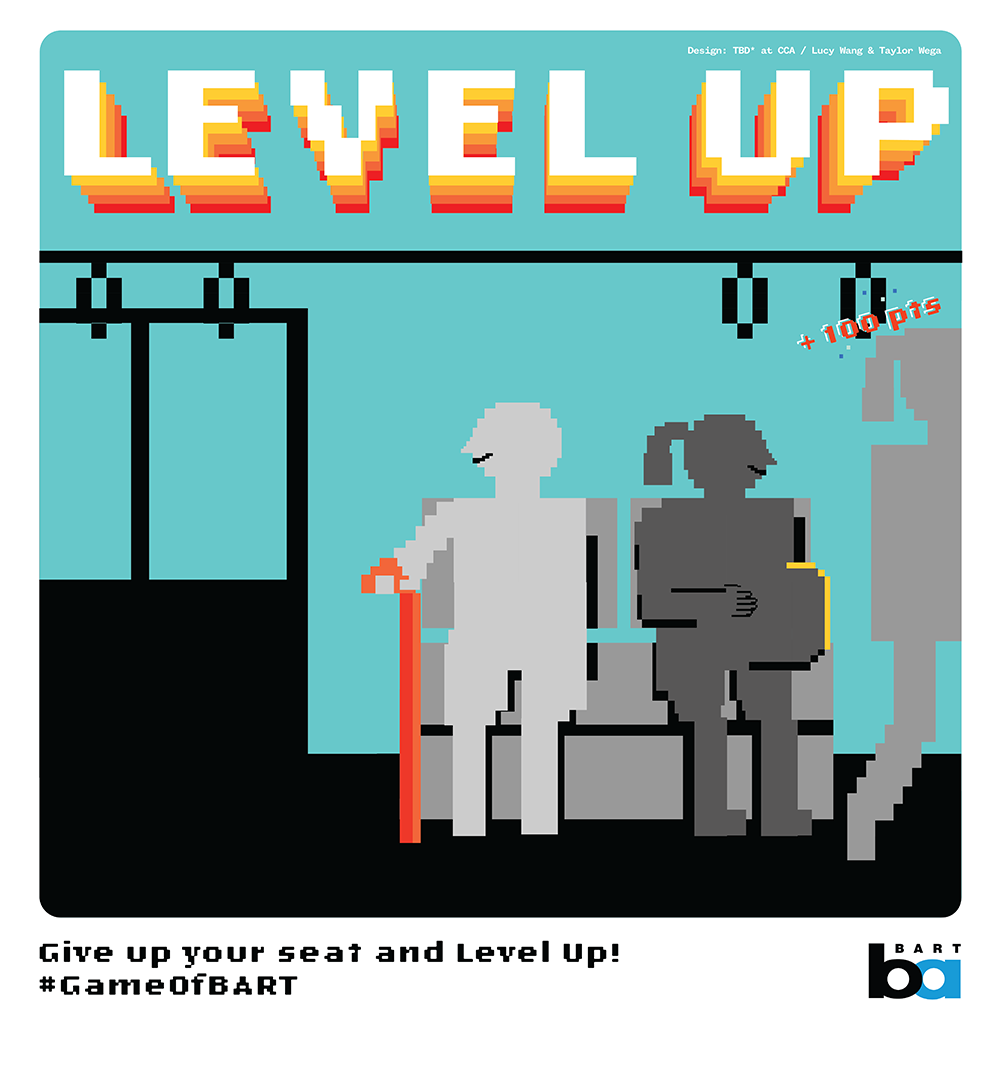
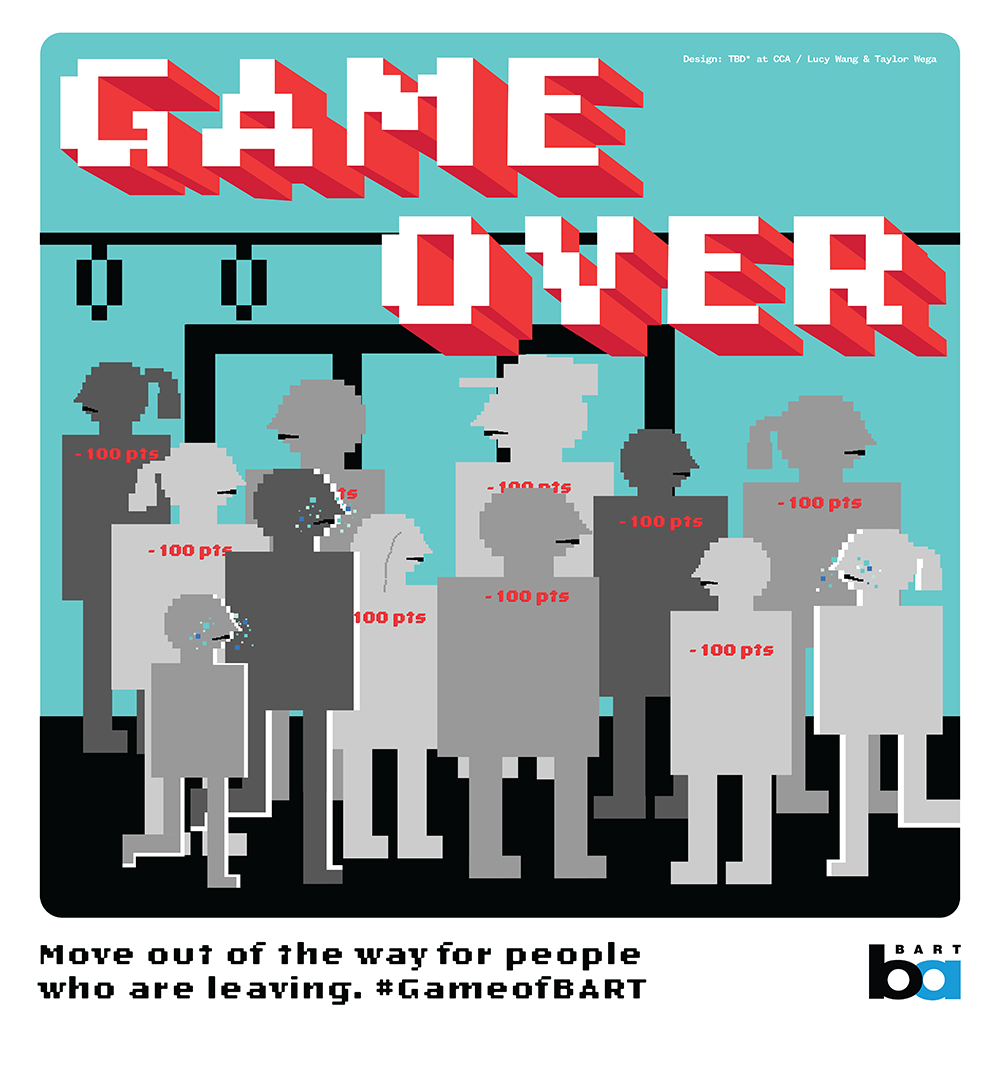
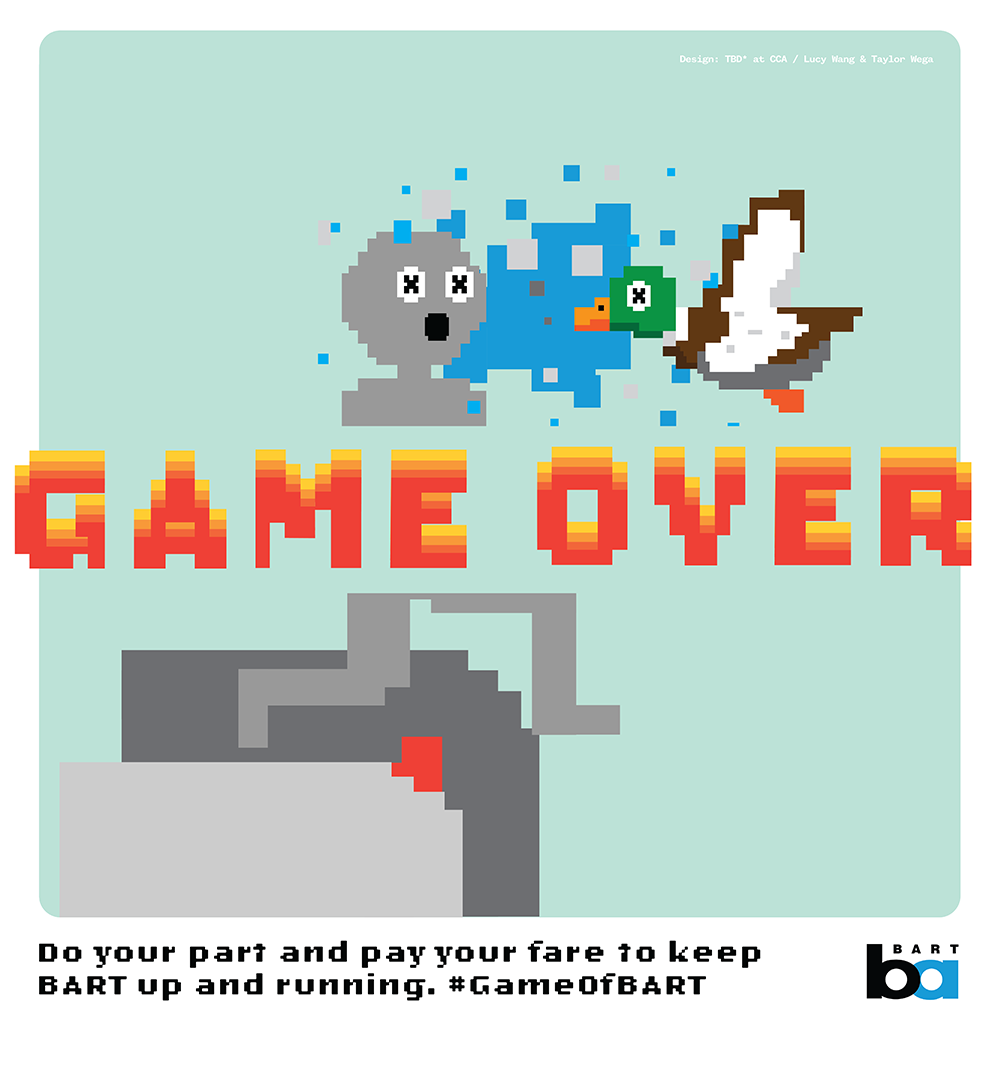
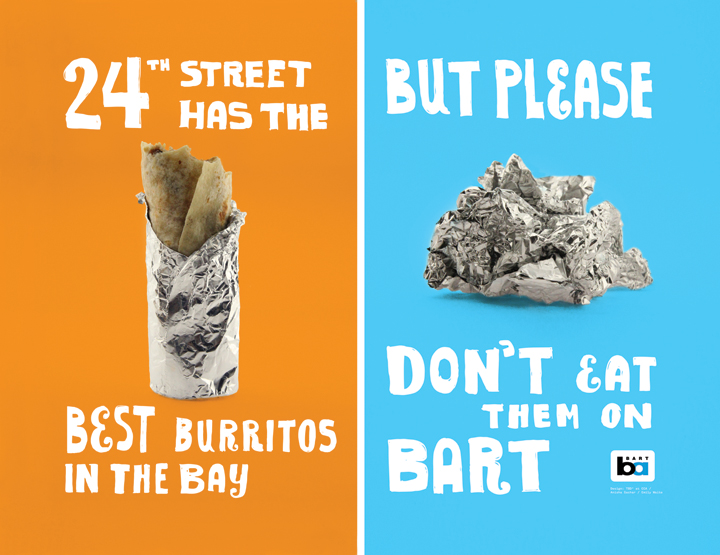
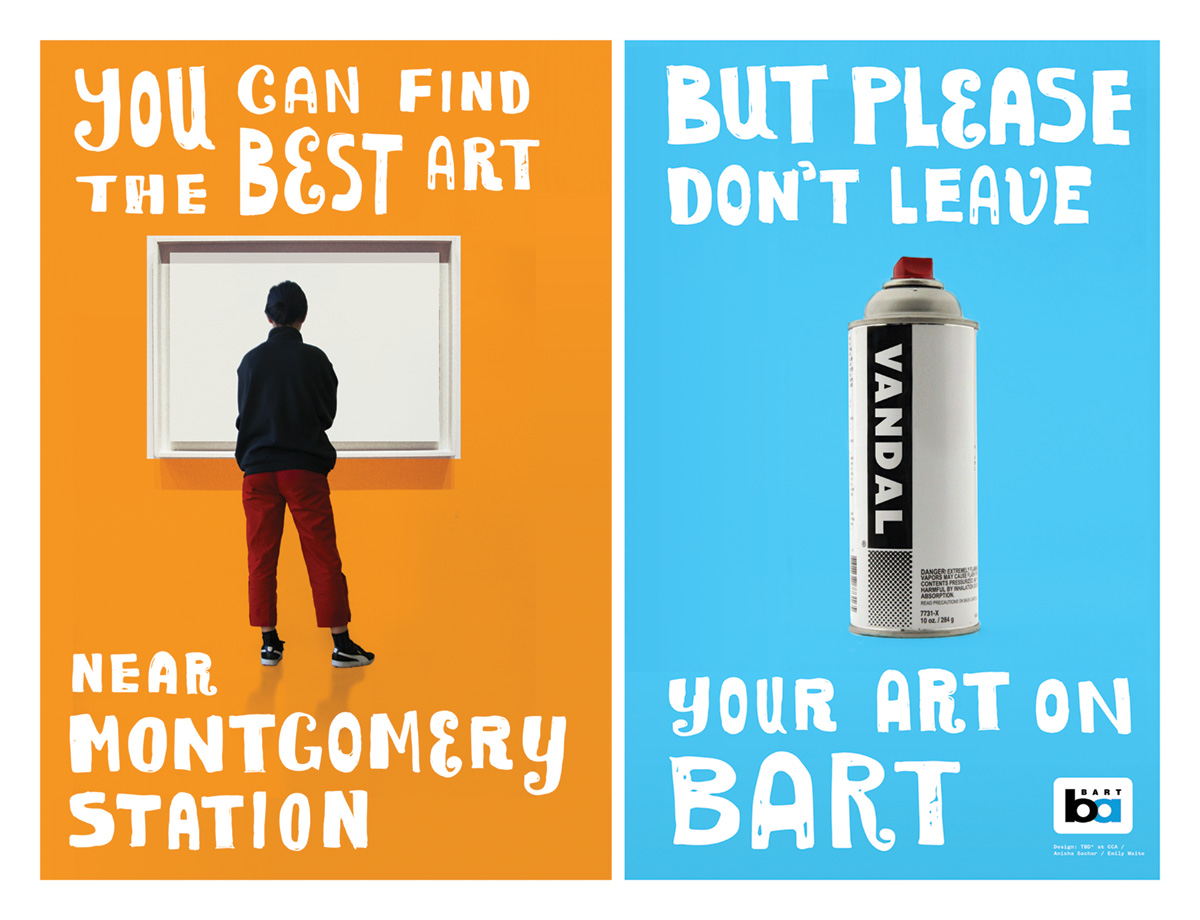
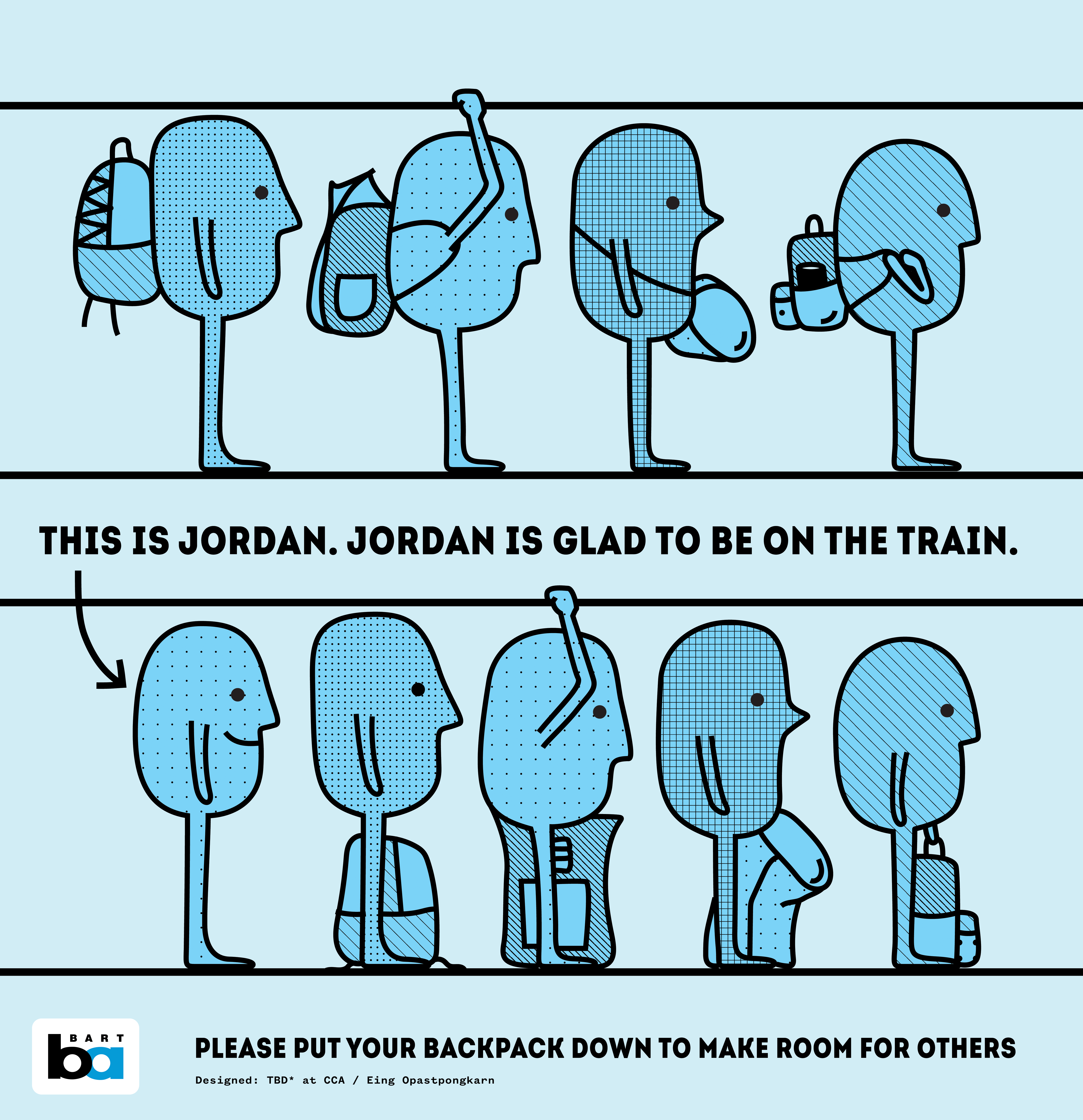
See more of TBD*’s work at their website (tbdcca.com). Eric Heiman is an Associate Professor of Design at the California College of the Arts (CCA) and is the faculty advisor for TBD*. He is also the co-founder and principal of the San Francisco design firm, Volume Inc.